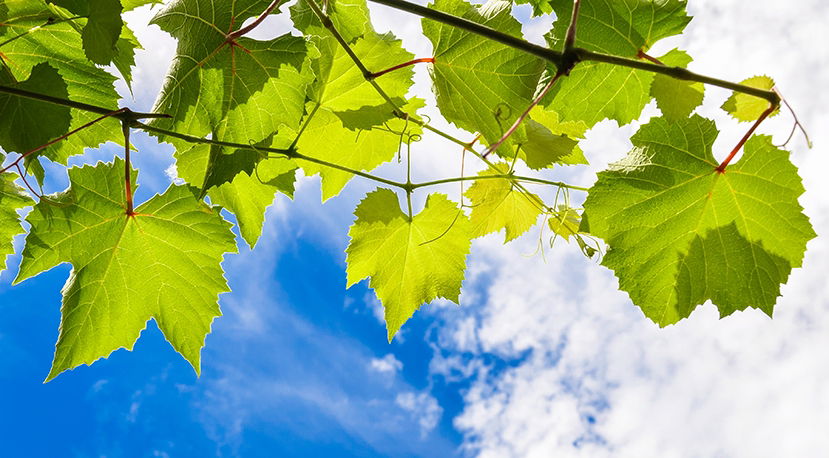BLOG
Common Knowledge: Photosynthesis
Kirra Barnes Viticulture Insights

There have been moments in my career as a professional winophile where I’ve realized I haven’t retained a bit of information that perhaps I should have learned in grade school had I been paying attention. Everyone needs a refresher once in a while and this series of blog posts aims to fill in possible gaps of knowledge that your grade-school mind may not have realized you would use in your fabulous wine career.
Life on earth depends on photosynthesis. There would be no oxygen on earth without it.
Simply put, plants are able to convert sunlight into the energy or food they need in order to grow. Oxygen is produced and released by the plant as a byproduct of this process.
The cellular composition of leaves includes structures called chloroplasts, which contain chlorophyll. Chlorophyll is actually a pigment that absorbs light, particularly red and blue. It reflects green light which is why we see most plants as green. The absorbed light gives the plant the energy to split the water molecules that it takes up from the roots into hydrogen and oxygen.

Leaf cells with green chloroplasts
Leaves also have microscopic holes called “stomata” that allow the plant to take in carbon dioxide from the atmosphere. Inside the plant, carbon dioxide bonds with the hydrogen and the freed oxygen is released into the air.

Stomata, seen on the surface of a leaf
The bonded carbon dioxide and hydrogen are metabolized by the plant into a carbohydrate called glucose. The plant uses some of the glucose for growth, but stores some away for later. As the plant grows and matures it uses fruits and vegetables to store this extra glucose, which eventually brings sweetness to fully ripe grapes, peaches and carrots, etc.
The photosynthesis process is light-dependent but is restricted by temperature. Photosynthesis will not occur under 50°F/10°C or above 95°F/35°C. This is why wines can have green or herbal flavors in extremely hot growing seasons—the grapes have struggled to ripen fully! Other conditions affecting the process include strong winds and lack of moisture.

Photosythesis
Learn More About wine:
- French Wine Scholar study & certification program
- Italian Wine Scholar study & certification program
- Spanish Wine Scholar study & certification program
- Common Knowledge : Estuary
- Common Knowledge : The Massif Central



